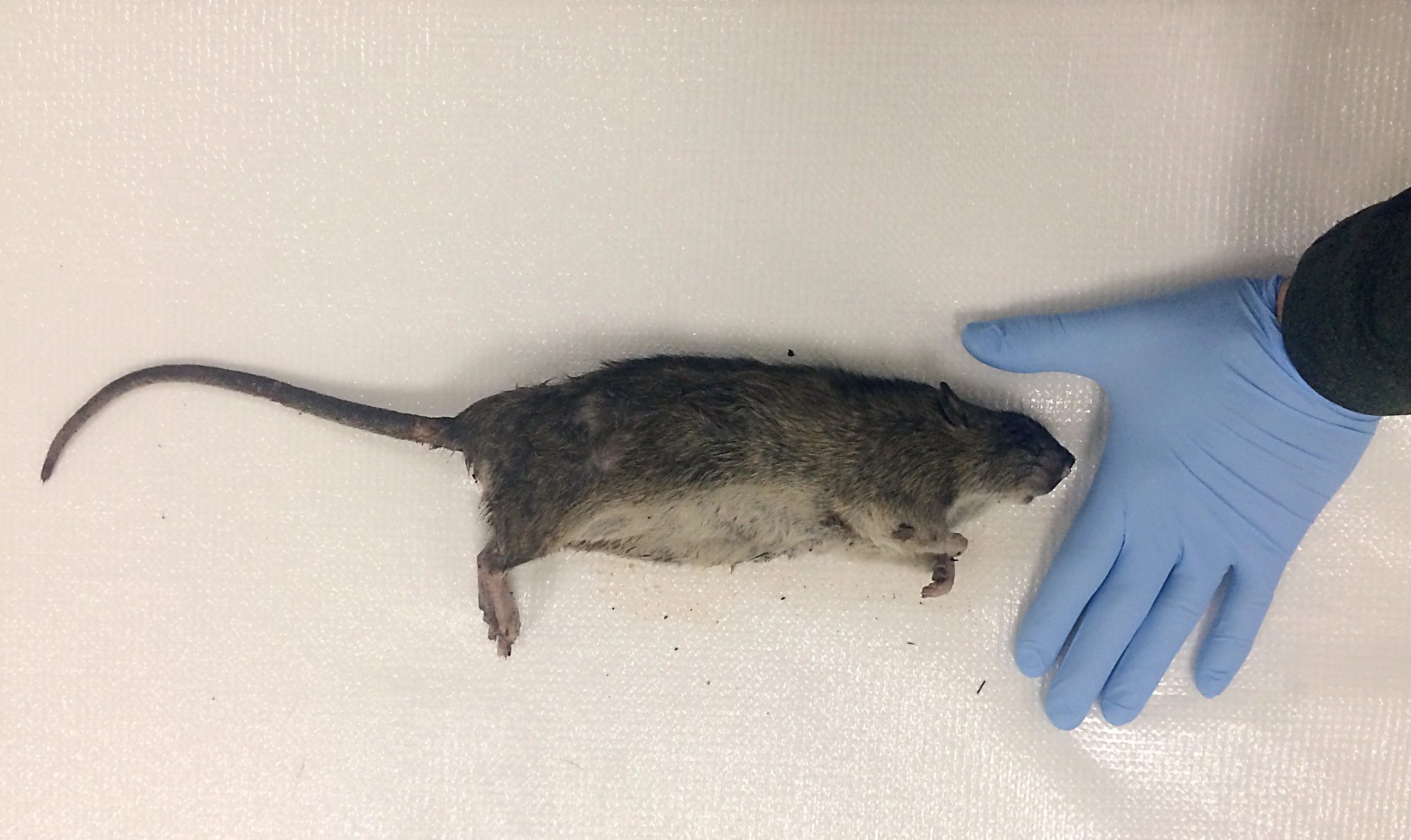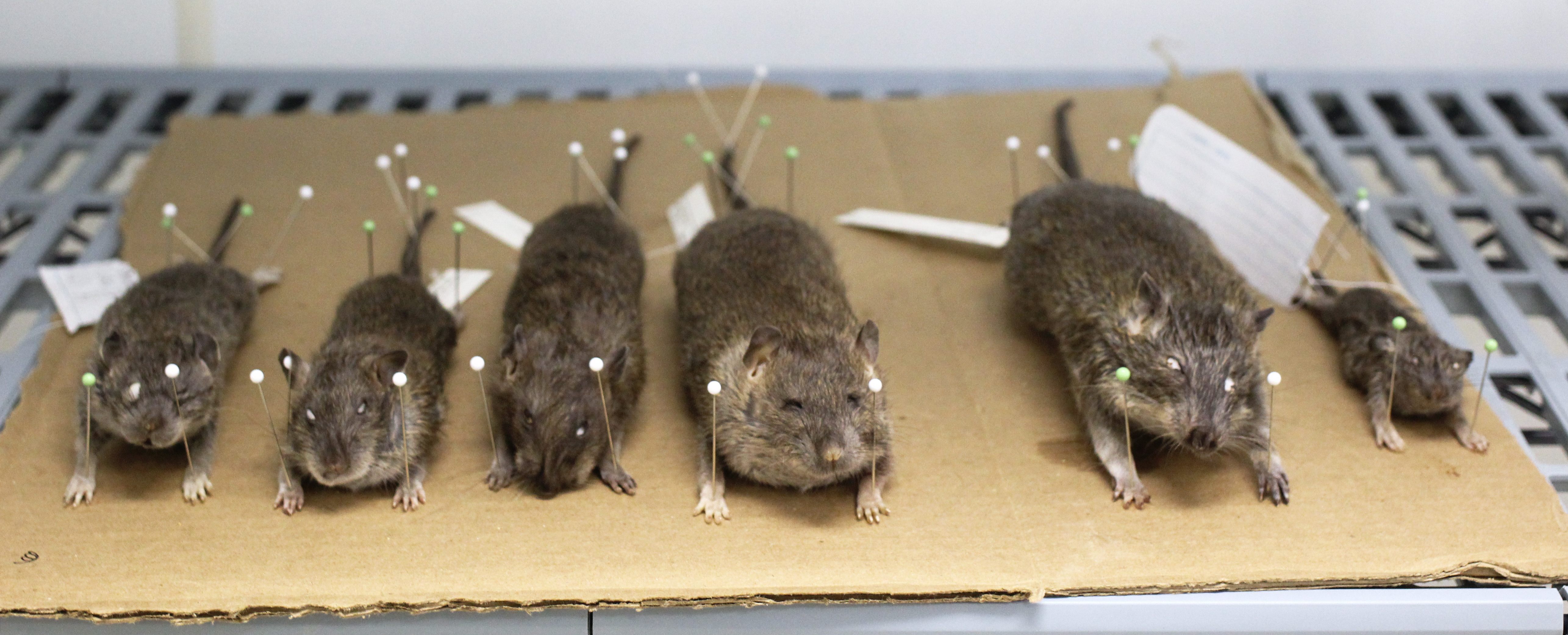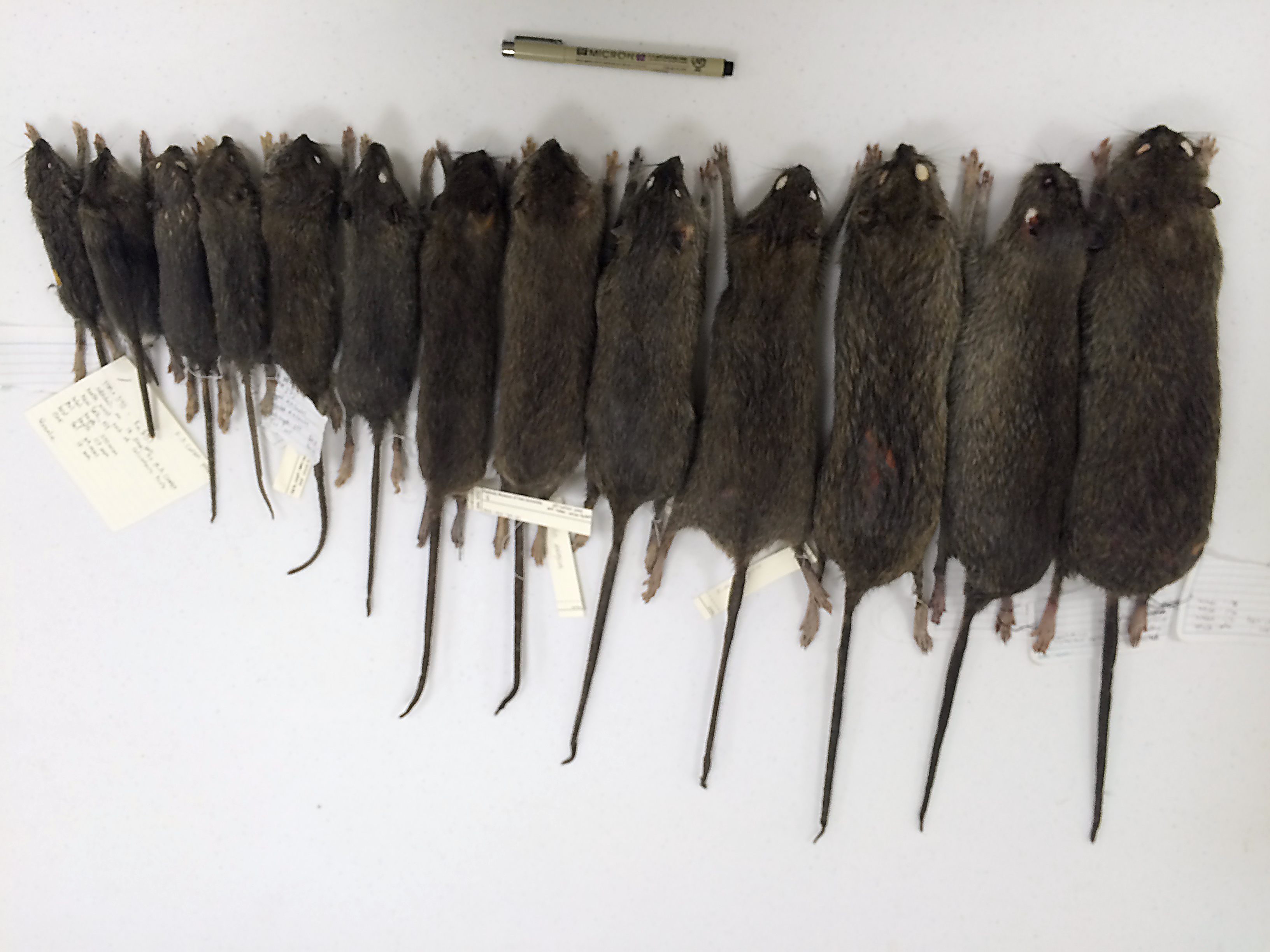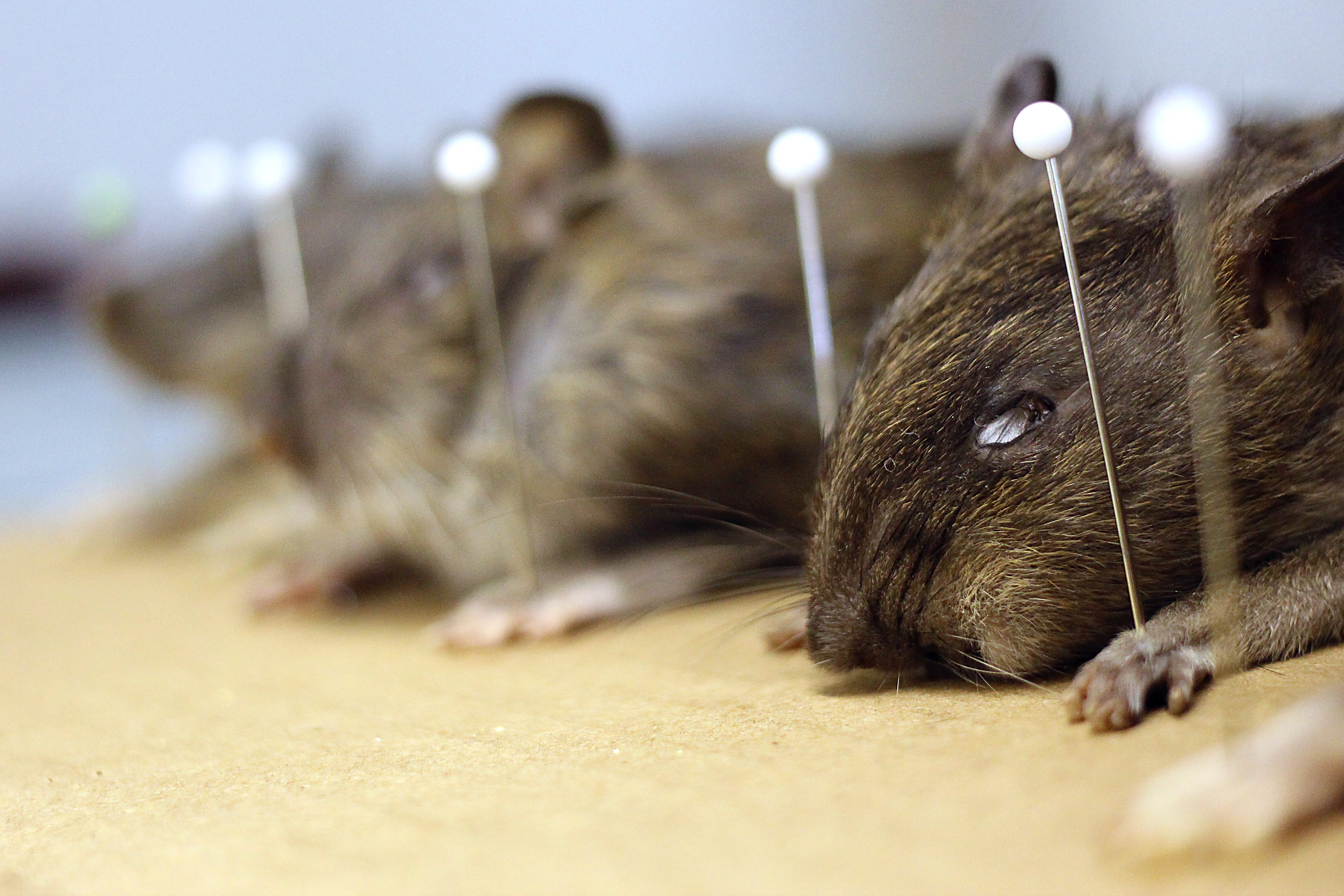Just How Huge Are New York’s Rats?
This one weighs about 1.5 pounds.
 A real-life ROUS (Photo: Matt Combs)
A real-life ROUS (Photo: Matt Combs)
Matt Combs, a doctoral student at Fordham University, studies rats, and the rat in the picture above is one of the largest he’s ever seen.
“I’ve caught rats all over the city, and I’ve seen the ones that I didn’t catch,” he says. “I think it’s among the biggest that live in New York City.”
In life, the rat weighed 675 grams, which is edging up on one and half pounds. There may be some rats out there in the city that are larger, maybe 700 or 800 grams, Combs says. Rats even bigger than that have been found, on occasion; the species of rat that lives in New York City, Rattus norvegicus, can grow as large as two pounds.

A 675 gram rat, though—that’s a big rat. One and half pounds is about the size of a two-month old Pomeranian or of a small adult guinea pig, so it doesn’t entirely make sense that a 1.5 pound rat should seem so big. But it does. A one and half pound rat is chunky, and compared to many New York City rats, even a 500 gram rat, just over one pound, is a big rat.

For comparison (Photo: Matt Combs)
Wild rats lives in colonies, but most people generally don’t see rats in the context of their fellow rodents. In New York, maybe you see a rat from a few feet away, while it’s poking around in the trough of a subway track. Maybe you see a dark blur scurrying across the sidewalk. Maybe you think: that was a big rat.
Rarely does anyone have the chance to juxtapose the size of rats that live in the city, as Combs did while he and Elizabeth Carlen, a PhD candidate in the same lab, were preparing rat specimens to send off to the Peabody Museum, at Yale University. They were able to directly compare a big New York City rat to a small New York City rat and to New York City rats of every size in between:

Specimens of the New York City Rattus norvegicus, from small to large (Photo: Matt Combs)
These rats were just some of the hundreds that the lab Combs and Carlen work for has collected. They’re trying to understand how rats spread through the city and what makes rats succeed or fail when colonizing new areas. Primarily, the scientists look at the rats’ genes, which can show how a lineage of rats has dispersed as young rats move into new neighborhoods and try to establish new colonies.
The taxidermied rats that are heading to the Peabody, along with their skeletons, can show the particular, subtle characteristics, like color of fur or shape of bones, that might distinguish New York City Rattus norvegicus from R. norvegicus elsewhere. Combs, Carlen and their colleagues don’t actually need whole rats to get genetic samples, but they do need whole rats to collect and examine the rats’ organs, in search of parasites.
If they can understand how rats spread across the city, they may be able to understand more about how disease spreads, and the parasites living in the rats’ insides are another clue to how rat colonies move and interact with one another.

These rat specimens will be kept for future research (Photo: Matt Combs)
It’s standard practice to weigh specimens like these, and it’s possible that the researchers could see some patterns in the data collected—perhaps adult rats in one area of the city are heavier than in another. Most of the rats they caught, though, were on the small side, since the traps they use tend to attract juvenile rats.
The larger rats above were caught using trained dogs, and Combs remembers exactly where they were caught. Big rats tends to live really close to their food sources, because the less energy and the less stress they have to expend to get to their food, the more calories they can pack away.
“I was staring at the dumpster where the rats eat every day,” says Combs. “These are the laziest rats.”
They lived within 20 to 30 feet of an unending feast, and their lives consisted of ferrying back and forth that short distance between home and meals. That easy access to food made a huge impact on their size. According to the Combs, the average size of an adult rat caught in the study was around 200 to 250 grams. Those large rats, the 500 to 675 gram ones, were two to three times as heavy.
If you see a rat that lives next to a dumpster? That’s a big rat.


















Follow us on Twitter to get the latest on the world's hidden wonders.
Like us on Facebook to get the latest on the world's hidden wonders.
Follow us on Twitter Like us on Facebook